Why every photographer should use a polarizing filter - A Tutorial to improve the quality of your photos
Polarizing filters are a must-have tool for photographers. Polarizing filters (sometimes also called polarizers) reduce the amount of reflected light and enhance photographs by increasing color saturation and contrast. As such, you cannot control for polarization post-production. I therefore always carry a polarizing filter in my camera bag.
What is a polarizing filter?
Light never comes from one direction. Imagine the sun as a massive light bulb. Arrays of the sun hit the earth under our feet, the building on the other side of the street and the flowers you are trying to photograph. These surfaces subsequently reflect light and, as long as they are non-metallic, the reflected light becomes polarized (a wave of light). A polarizing filter can filter out the polarized component of light. This reduces, for example, the reflection of shiny surfaces, allowing natural colors to come through.
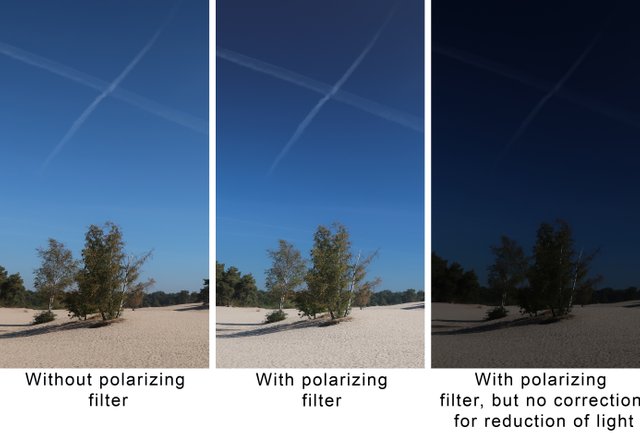
When should you use a polarizing filter?
Many people use polarizing filters to darken the sky. A polarizing filter will darken the sky (when shooting under correct conditions) because some light from the sky is already polarized. However, there are many more (and better) situations where you can and should use a polarizing filter. As mentioned above, every non-metallic surface will, to some extent, reflect polarized light. Shiny surfaces, such as windows, water, sweaty skin or wet leaves are especially prone to reflecting polarized light. The polarizing filter reduces the amount of polarized light. A polarizing filter can therefore reduce the reflections from a window into a dark interior, allowing it to be seen through. Or suppress glare from the surface of water. Or…, well you get the idea.
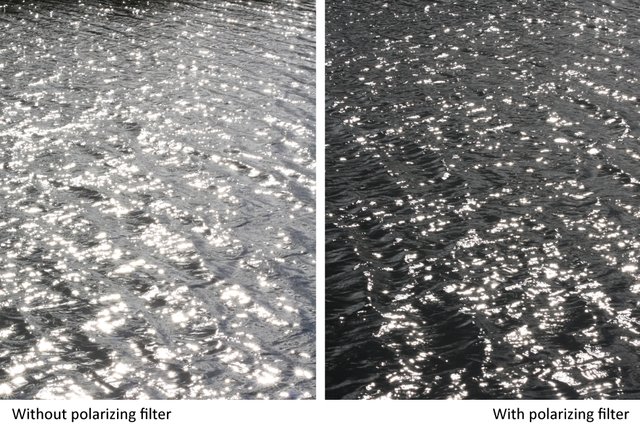
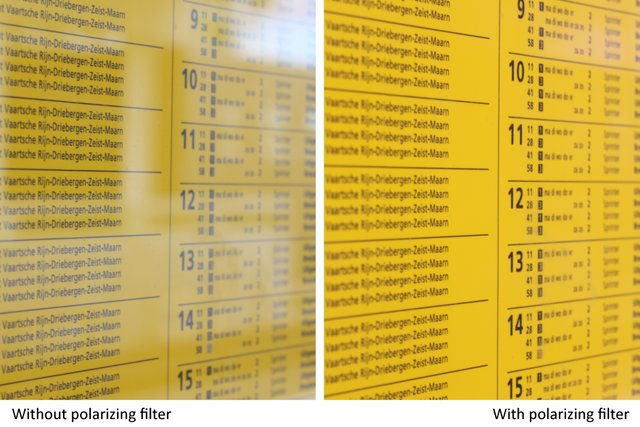
Because the effects of controlling polarization at the time of exposure cannot be replicated post-production, you should always carry and use a polarizing filter.
How does a polarizing filter work?
There are two types of polarizing filters: linear and circular. Most camera’s, however, wont work with linear filters as this would result in focusing issues. Photographers, therefore, commonly use circular polarizing filters. Circular polarizing filters consist of two polarizing filters (the front element is a linear filter and the rear element is a retarder or quarter-wave plate, I won’t go into detail about these two filters as that would be too technical).
The front element of a circular polarizing filter can rotate. This allows you to adjust the ‘angle’ of the polarized light that is filtered. Or in other words: control the amount of polarized light that is filtered.
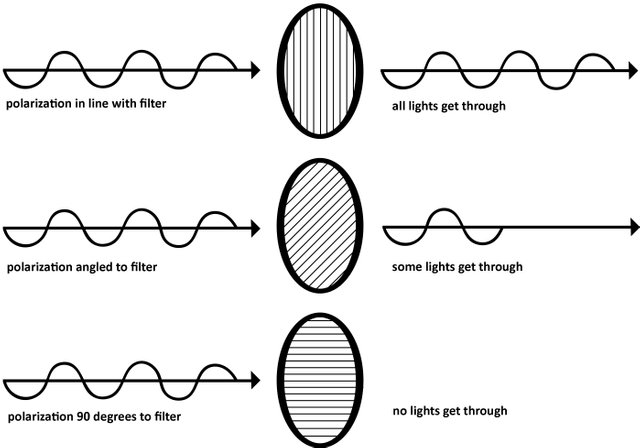
Disadvantages of a polarizing filter?
Circular polarizing filters consists of two filters. They can therefore be rather thick. Especially when taking wide-angle shots, it might happen that you see the edges of the polarizing filter on your photo (you can compare it to vignetting). Is this really a disadvantage? No, not really. You can easily crop the image post processing.
Some will say that the reduction of light is a disadvantage. Polarizing filters reduce the amount of light that is passed through to the sensor by about 2 stops. This requires you to adjust your camera settings. E.g. increase the exposure time or widening the aperture. However, I think that this allows you to take even better (more artistic) photos. As long as you know the implications of using a polarizing filter, you should be fine.
Because you add another layer of glass (basically two layers of glass), a polarizing filters increases the likelihood of lens flare. Avoiding to shoot directly into a light source and making sure your filters are clean, can reduce the amount of flare.
What are your experiences in using a polarizing filter?
Would you like me to write more photography tutorials? Let me know in the comments.
Don’t forget to Upvote, ReSteem, Comment or to Follow Me if you liked this post!
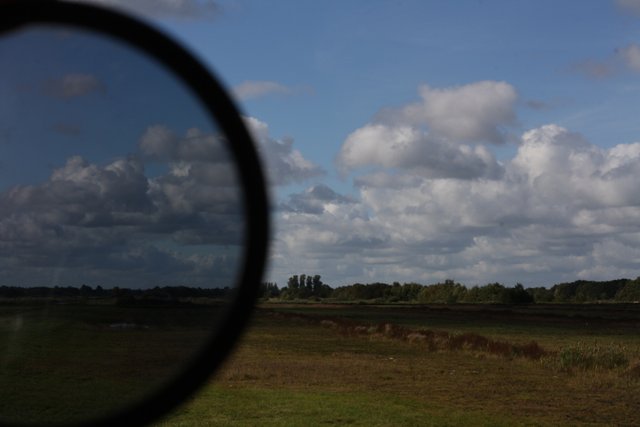
This post has been upvoted by @photomag and it's manual curation trail with a curie direct follow vote.
Vote for @markangeltrueman, the creator of @photomag as a witness here
Congratulations @aegir! You have completed the following achievement on the Steem blockchain and have been rewarded with new badge(s) :
Click on the badge to view your Board of Honor.
If you no longer want to receive notifications, reply to this comment with the word
STOPDo not miss the last post from @steemitboard:
Hello @aegir, thank you for sharing this creative work! We just stopped by to say that you've been upvoted by the @creativecrypto magazine. The Creative Crypto is all about art on the blockchain and learning from creatives like you. Looking forward to crossing paths again soon. Steem on!
Thanks, really appreciate that! I hope to publish more photography tutorials, so I am sure our paths will cross again!